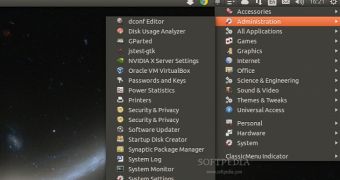There are a lot of Ubuntu users who still don't like Unity and who feel that the GNOME 2 solution of displaying the menus was the way to go. The ClassicMenu Indicator offers a compromise that might satisfy everyone.
The number one contention against Ubuntu is probably Unity, and even if the number of users has been increasing and more and more people have started to use it, there is still a fair number of users who like the way GNOME 2 displayed the menus.
This is why the MATE desktop environment was born and why other desktop environments are trying to recapture the GNOME 2 method. Now, if you can at least compromise and look for the menu button on the top right side of the screen, instead of the top left, you might enjoy the ClassicMenu Indicator.
The good news is that the developer of the ClassicMenu Indicator has also made this little application available for the upcoming Ubuntu 14.04 LTS (Trusty Tahr) version. If you happen to run the development build, the indicator will work flawlessly.
You can install the ClassicMenu Indicator in two ways, either by running the deb file provided, or with the help of the provided PPA. We recommend the PPA because it will allow users to also receive any updates that might be applied in the future, without having to manually install them. Open a terminal and enter the following commands (you will need to be root in order to make it work):
sudo add-apt-repository ppa:diesch/testing sudo apt-get update sudo apt-get install classicmenu-indicator
When the installation has been completed, which shouldn’t take too long, you can start the new indicator from the Dash. Fortunately, the indicator adds itself to the startup list, so you don't have to do it manually.
ClassicMenu Indicator also got an update just a few days ago. It's nothing too fancy, and some of the changes are purely cosmetic. For example, the text for the icons in ClassicMenu Indicator submenu has been corrected and it shows up properly now, and some menu items have been added to change the configuration.
Another interesting change that has been implemented in the latest version of ClassicMenu Indicator takes care of an older problem that was affecting distros like Xubuntu, which doesn't have Unity, but Xfce. According to the developer, a desktop-specific menu is now used, if it's available.
You can check the official website for more details about this release, or you can download the ClassicMenu Indicator from Softpedia.

 14 DAY TRIAL //
14 DAY TRIAL //